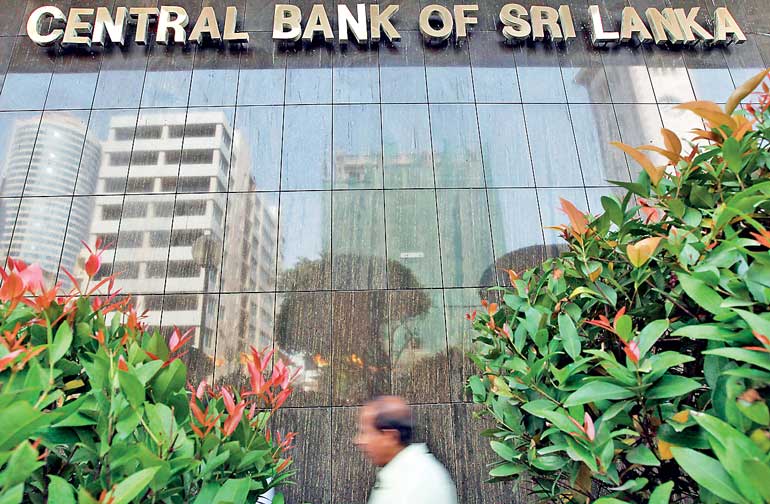Sunday Apr 20, 2025
Sunday Apr 20, 2025
Tuesday, 3 April 2018 00:00 - - {{hitsCtrl.values.hits}}

Reuters: Sri Lanka’s Central Bank is expected to keep key interest rates unchanged tomorrow (4 April) after a rate review, but economists in a Reuters poll are not ruling out the possibility of a rate cut to help bolster economic growth that has slipped to a 16-year low.
The economy grew 3.1% in 2017, the slowest since a recession in 2001 and well below the 4.5% pace of 2016, revised Government data showed last month.
Twelve of 14 economists in the survey predicted the Central Bank would keep its standing deposit facility rate (SDFR) and standing lending facility rate (SLFR) unchanged at 7.25% and 8.75%, respectively.
Two analysts forecast a rate cut of 25 basis point in SLFR.
All predicted the statutory reserve ratio (SRR) would remain at 7.50%.
“They might consider holding the prevailing rates. But a rate cut would be much welcome by the market in order to achieve some healthy growth rates (in the economy), which is otherwise faltering,” said Softlogic Stockbrokers Research Head Danushka Samarasinghe.
“A rate cut could somewhat negate the natural slowdown which could be expected from the new broad based capital gains tax and higher payee taxes,” he said, referring to new taxes in the wake of a new Inland Revenue Act enacted last year.
The Central Bank’s rate decision is due before Prime Minister Ranil Wickremesinghe faces a no confidence motion tomorrow (4 April). The motion was submitted by Joint Opposition amid political uncertainty since the two main parties in the ruling coalition lost a Local Government election in February.
President Maithripala Sirisena’s centre-left Sri Lanka Freedom Party (SLFP) and the prime minister’s centre-right United National Party (UNP) suffered defeats in a local election held on 10 February.
Since then, the future of the unity Government has been a concern and the Central Bank Governor has warned of risk to growth from political instability.
The Central Bank has tightened monetary policy four times since December 2015 through March last year to fend off pressure on the fragile rupee and curb stubbornly high credit growth that stoked inflation.
The previous rate increases along with tight fiscal measures to meet conditions by the International Monetary Fund (IMF) for a $1.5 billion loan have dragged on the economy.
Last month, the IMF said the Central Bank has prudently managed monetary policy amid price shocks and market volatility and urged it to remain focused on price stability as its primary objective and stand ready to tighten if signs of demand-side inflation pressures or accelerating credit growth appear.
Discover Kapruka, the leading online shopping platform in Sri Lanka, where you can conveniently send Gifts and Flowers to your loved ones for any event including Valentine ’s Day. Explore a wide range of popular Shopping Categories on Kapruka, including Toys, Groceries, Electronics, Birthday Cakes, Fruits, Chocolates, Flower Bouquets, Clothing, Watches, Lingerie, Gift Sets and Jewellery. Also if you’re interested in selling with Kapruka, Partner Central by Kapruka is the best solution to start with. Moreover, through Kapruka Global Shop, you can also enjoy the convenience of purchasing products from renowned platforms like Amazon and eBay and have them delivered to Sri Lanka.
Discover Kapruka, the leading online shopping platform in Sri Lanka, where you can conveniently send Gifts and Flowers to your loved ones for any event including Valentine ’s Day. Explore a wide range of popular Shopping Categories on Kapruka, including Toys, Groceries, Electronics, Birthday Cakes, Fruits, Chocolates, Flower Bouquets, Clothing, Watches, Lingerie, Gift Sets and Jewellery. Also if you’re interested in selling with Kapruka, Partner Central by Kapruka is the best solution to start with. Moreover, through Kapruka Global Shop, you can also enjoy the convenience of purchasing products from renowned platforms like Amazon and eBay and have them delivered to Sri Lanka.